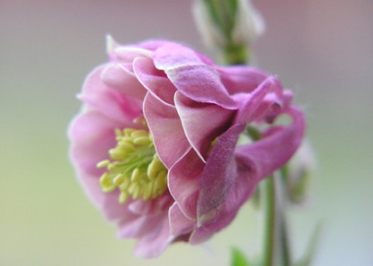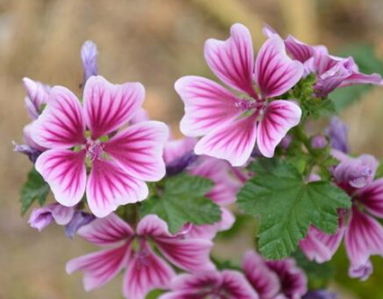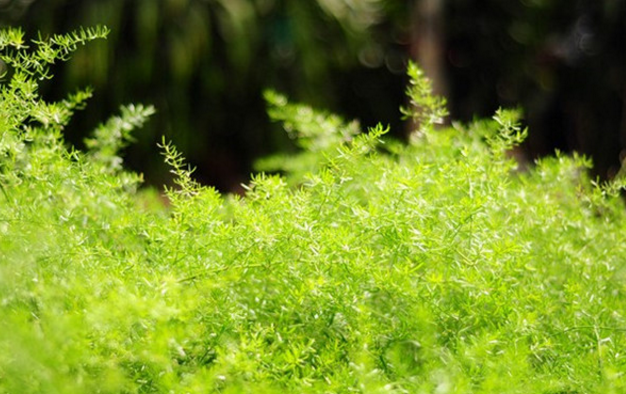When to blossom and culture methods and points for attention of Euphorbia angustifolia
Euphorbia angustifolia, a kind of beautiful flowering, is more suitable for breeding in the courtyard. As a highly ornamental plant, being praised is the best fertile soil. Why don't you go and see what it is like.

When will the cabbage blossom?
1. The florescence of Euphorbia angustifolia
Azalea blossoms every year from May to July. When it blossoms, it usually blossoms 3 to 7, usually blue, purple, and some other colors, and the anther is yellow.
2. The flower words and legends of Doucai
Doucai has a different flower language, must be successful, insist on victory, like purple Doucai, its symbolic meaning is victory.
It is said that in ancient Greece, soldiers joined the war in order to protect their homeland, and the war was a dangerous close battle, while Doucai, which grew in the rubble in the depths of the valley, witnessed the people's war as well as the victorious side, so his flower words were victorious.
Culture methods and matters needing attention
The culture method of Euphorbia angustifolia
1. Selection of basin soil
For potted plants, you need to choose a slightly larger flowerpot and put the soil in the flowerpot, which can be sandy soil with good drainage or humus-rich saprophytic soil, and a little base fertilizer should be added to the soil.
2. Light and temperature
Douzi likes a cool climate, avoid high temperature but can be cold-resistant, and need to keep enough light. It is necessary to maintain the growth temperature between 15 ℃ and 35 ℃, with moderate light to avoid high temperature and sun exposure in summer, when shading is needed, or the potted plants should be kept in a semi-shaded place.
3. Watering and fertilizing
Euphorbia angustifolia needs to strengthen the management of reasonable watering and fertilization. In the peak period of growth, we need to give sufficient water, according to the degree of dryness and wetness of the basin soil to determine the amount and times of watering, but avoid stagnant water. Dry weather needs timely drainage, and after rain, it needs timely drainage, pay attention to maintain a certain amount of air humidity. Fertilization requires medium fertility. Fertilizer can be applied once a week, but the concentration should not be too high. Pay attention to stop fertilizing after autumn, in addition, you need to apply some phosphate and potash fertilizer before flowering to make the flowering more gorgeous.
Matters needing attention in the culture of Rabdosia angustifolia
1. Methods of reproduction
Basically, it is propagated by ramet or sowing, which can be sowed in spring or autumn, and ramet reproduction is mainly in autumn.
2. Pick the heart
During the growth period, it is necessary to pick the heart in time to control the height of the plant. After blooming, the remnant flowers can be cut off, so that it can be preserved as a foliage plant.
3. Diseases and insect pests
The main pests are aphids, which can cause mosaic disease and powdery mildew, which need timely and reasonable treatment.
Is the flower very beautiful? although there is a rapeseed in the name, it does not affect its beautiful value at all.
Culture methods and matters needing attention of Rabdosia angustifolia
Selection of potted soil as a culture method of Rabdosia angustifolia
For potted plants, you need to choose a slightly larger flowerpot and put the soil in the flowerpot, which can be sandy soil with good drainage or humus-rich saprophytic soil, and a little base fertilizer should be added to the soil.
Light and temperature
Douzi likes a cool climate, avoid high temperature but can be cold-resistant, and need to keep enough light. It is necessary to maintain the growth temperature between 15 ℃ and 35 ℃, with moderate light to avoid high temperature and sun exposure in summer, when shading is needed, or the potted plants should be kept in a semi-shaded place.
Watering and fertilizing
Euphorbia angustifolia needs to strengthen the management of reasonable watering and fertilization. In the peak period of growth, we need to give sufficient water, according to the degree of dryness and wetness of the basin soil to determine the amount and times of watering, but avoid stagnant water. Dry weather needs timely drainage, and after rain, it needs timely drainage, pay attention to maintain a certain amount of air humidity. Fertilization requires medium fertility. Fertilizer can be applied once a week, but the concentration should not be too high. Pay attention to stop fertilizing after autumn, in addition, you need to apply some phosphate and potash fertilizer before flowering to make the flowering more gorgeous.
Matters needing attention in Culture and breeding methods of Rabdosia angustifolia
Basically, it is propagated by ramet or sowing, which can be sowed in spring or autumn, and ramet reproduction is mainly in autumn.
Pick the heart
During the growth period, it is necessary to pick the heart in time to control the height of the plant. After blooming, the remnant flowers can be cut off, so that it can be preserved as a foliage plant.
Diseases and insect pests
The main pests are aphids, which can cause mosaic disease and powdery mildew, which need timely and reasonable treatment.
Culture methods and matters needing attention of Ipomoea oleifera
English name: Ipomoea aquatica
Also known as: fake custard, elm, black brocade, Yimu Ningjing
Latin scientific name: Paraquilegia microphylla
Families and genera: Ranunculaceae
Distribution of origin: Xizang, northwest Yunnan, western Sichuan, Gansu and other places
Ipomoea lanceolata, rhizome finely cylindrical to subfusiform, leaves numerous, usually 2-Ternate, glabrous; leaf blade triangular-ovate in outline, central leaflet broadly rhombic to reniform-rhombic, surface green, abaxially light green; scape erect, longer than leaves, sepals pale pansy or light purplish red, occasionally white, Obovate to elliptic-Obovate; petals Obovate to Obovate-long elliptic Cymbals erect, seeds narrowly ovoid, brown, lateral narrowly winged, smooth. It blossoms from June to August and bears fruit from August to September. It has medicinal value.
- Prev

The difference between marshmallow culture methods and matters needing attention and hollyhock
Mallow is a beautiful flower, the flower shape is more chic, and the color is more beautiful. Breeding mallow, we need to do a good job in daily work, watering and fertilization can not be careless. Cultivation methods and matters needing attention of mallow: soil, mallow does not have high requirements for soil, sandy soil can be selected.
- Next

Where can the breeding methods and matters needing attention of Tianmen winter be put?
Asparagus, also known as asparagus, is a perennial semi-vine green herb of Liliaceae. With fusiform roots, leaflike branches linear, clustered, flowers white or reddish, berries bright red. It is a kind of perennial herb, which is widely distributed in our country. Radix asparagus has a certain medicinal value.
Related
- Fuxing push coffee new agricultural production and marketing class: lack of small-scale processing plants
- Jujube rice field leisure farm deep ploughing Yilan for five years to create a space for organic food and play
- Nongyu Farm-A trial of organic papaya for brave women with advanced technology
- Four points for attention in the prevention and control of diseases and insect pests of edible fungi
- How to add nutrient solution to Edible Fungi
- Is there any good way to control edible fungus mites?
- Open Inoculation Technology of Edible Fungi
- Is there any clever way to use fertilizer for edible fungus in winter?
- What agents are used to kill the pathogens of edible fungi in the mushroom shed?
- Rapid drying of Edible Fungi

